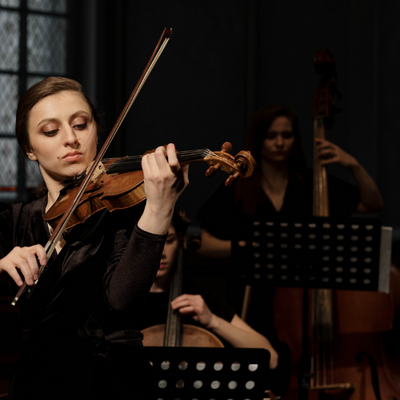For any musician, especially those devoted to string instruments like the violin, viola, cello, or double bass, the classical music repertoire provides a timeless foundation. Mastering essential works not only sharpens technical skills but also deepens an understanding of musical expression, allowing players to appreciate the nuances of great composers. Here are ten must-know classical pieces for every string instrument player, covering some of the finest violin concertos, essential cello pieces, and staple works for the viola.
1. Violin Concerto in D Major, Op. 35 by Pyotr Ilyich Tchaikovsky

Considered one of the pinnacles of the violin repertoire, Tchaikovsky's concerto is both technically challenging and emotionally stirring. The interplay between lyrical melodies and virtuosic passages makes this piece an essential for advanced violinists. Its rich dynamics and grandeur offer a full exploration of classical music for violin.
2. Cello Suite No. 1 in G Major, BWV 1007 by Johann Sebastian Bach

Bach's Cello Suite No. 1 is often the first major solo work cellists encounter. The opening Prelude is instantly recognisable, and its flowing arpeggios and harmonic progressions make it a deeply expressive piece. Though frequently performed, it never loses its capacity to inspire and challenge, representing a cornerstone in the essential cello pieces category.
3. Viola Concerto in D Major by Franz Anton Hoffmeister

Though the viola music repertoire is smaller compared to that of the violin or cello, Hoffmeister’s concerto stands out as a lively and rewarding piece for violists. Its bright character and playful motifs offer a rare chance for the viola to take centre stage, demonstrating the instrument’s full expressive range.
4. Symphony No. 9 in D Minor, Op. 125 ("Ode to Joy") by Ludwig van Beethoven

For string players in orchestras, Beethoven's ninth symphony is a hallmark of the repertoire. The final movement, featuring the famed "Ode to Joy," is a must-know for musicians seeking a grand orchestral experience. The piece demands a great deal of ensemble playing and a deep connection with fellow musicians, allowing string players to fully appreciate the collaborative nature of classical performance.
5. Violin Concerto in E Minor, Op. 64 by Felix Mendelssohn

This concerto is a favourite among violinists for its lyrical beauty and technical brilliance. Its continuous flow, without pauses between movements, was innovative for its time and challenges players to maintain focus throughout. Mendelssohn's concerto is a prime example of how classical music for violin can combine technical difficulty with melodic richness.
6. Sonata for Solo Cello, Op. 8 by Zoltán Kodály

Kodály's sonata is one of the most demanding solo works in the cello repertoire, pushing the boundaries of the instrument. Written in the 20th century, it requires advanced techniques such as double stops, pizzicato, and complex rhythmic structures, making it a challenging but immensely rewarding piece for any cellist looking to expand their range.
7. Sinfonia Concertante in E-flat Major, K. 364 by Wolfgang Amadeus Mozart

For violinists and violists, Mozart's Sinfonia Concertante offers a unique opportunity to perform a duo concerto with orchestra. The conversational interplay between the two instruments is playful and elegant, blending the brilliance of the violin with the warmer, deeper tones of the viola. It is a staple of the classical viola music repertoire and a favourite among chamber musicians.
8. Double Bass Concerto No. 2 in B Minor, Op. 3 by Giovanni Bottesini

Known as the "Paganini of the Double Bass," Bottesini composed works that pushed the technical limits of the instrument. His Double Bass Concerto No. 2 showcases the instrument's lyrical and virtuosic potential, offering double bass players a piece that requires both technical prowess and a strong sense of musicality.
9. Caprice No. 24 by Niccolò Paganini

While primarily known for violin, Paganini’s Caprice No. 24 transcends its original instrument and is often adapted for viola, cello, and even double bass. The piece is notorious for its technical demands, with rapid string crossings, double stops, and arpeggios. It remains one of the most challenging and recognisable pieces in the classical music repertoire for string instruments.
10. Concerto for Viola and Orchestra, Op. 1 by Carl Stamitz

Stamitz's viola concerto is another cornerstone of the viola music repertoire. It is a piece that balances classical elegance with moments of lively expression, offering violists the chance to develop their lyrical playing while mastering technically intricate passages.
Final Thoughts
These ten pieces are more than just essential repertoire; they are windows into the vast history and evolution of classical music. Mastering works such as Tchaikovsky's Violin Concerto or Bach's Cello Suite No. 1 not only advances technical skill but also enriches the player’s musical soul. Whether you're a student, a music educator, or part of a school music programme, exploring these classical gems will deepen your appreciation for the artistry behind string instrument performance.
For schools or music departments looking to equip their students with the right tools, having a selection of quality violins, cellos, and accessories can make a significant difference in student progression. Whether through solo practice or group ensembles, nurturing a connection to classical music opens a world of expressive possibilities.














